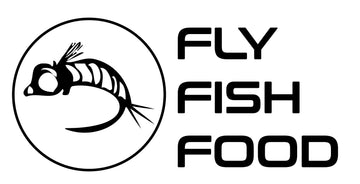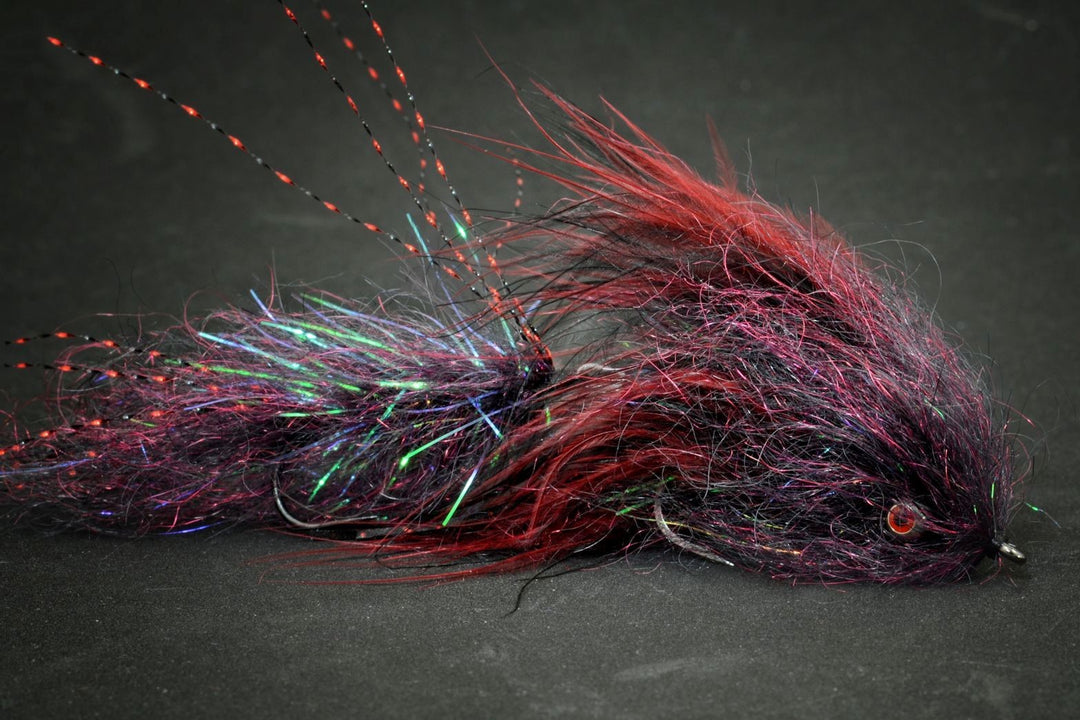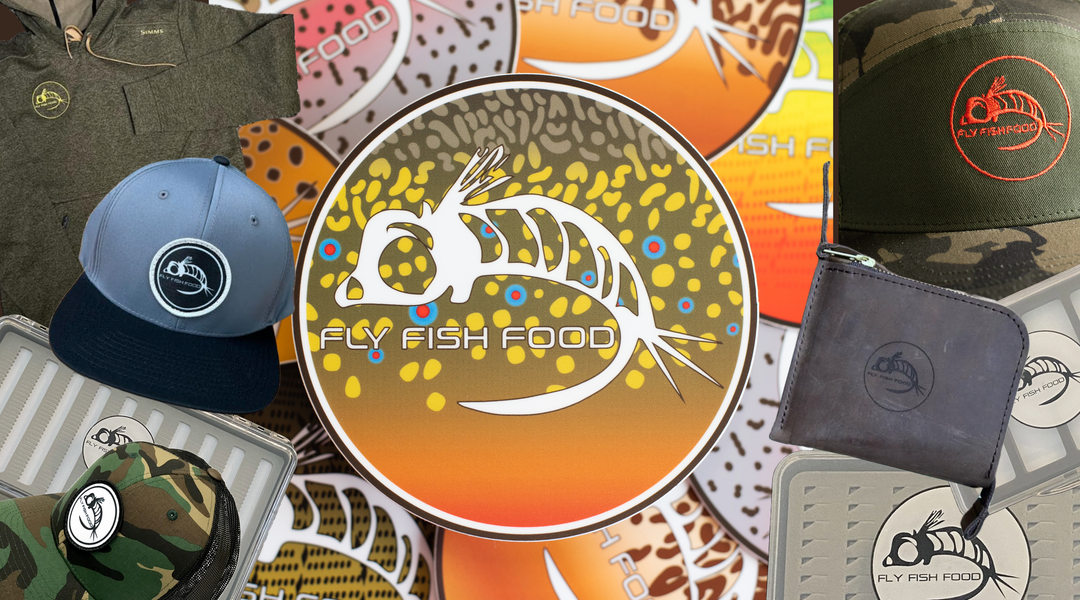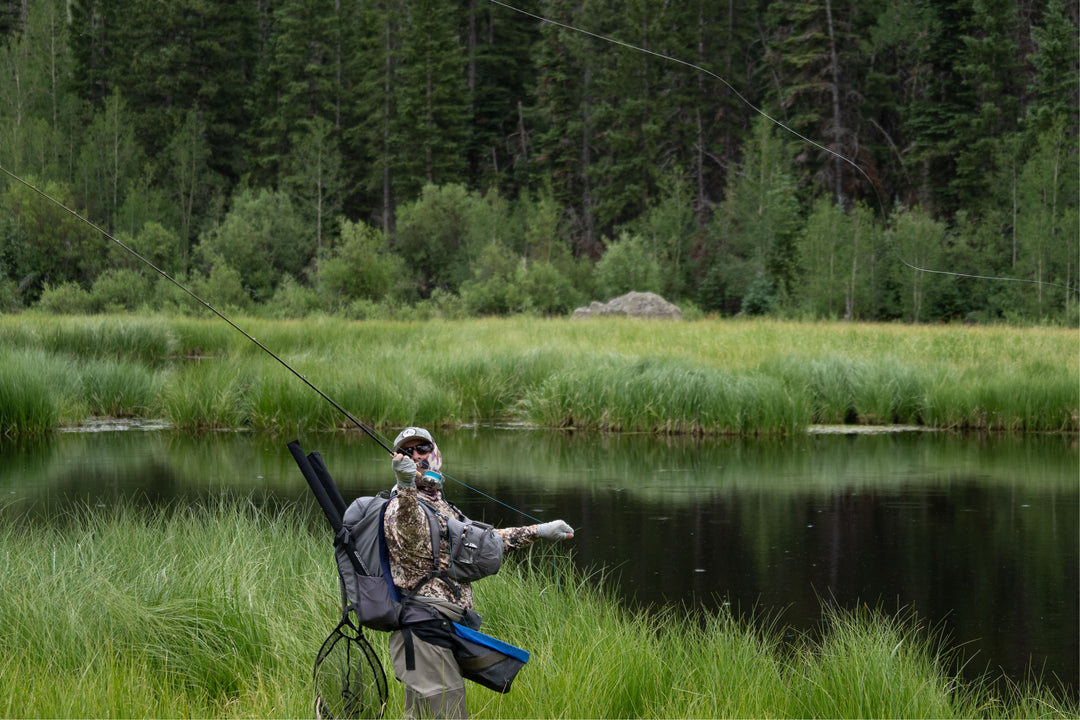Utah ·
Provo River Fly Fishing Report - August 8/23/2025
PROVO RIVER FLY FISHING REPORT
Utah's Provo River — Upper, Middle & Lower Sections
Report Date: August 23, 2025 | Next Update: August 30, 2025
Current River Conditions
High but fishable flows. Recent reports show elevated flows on the Provo — water is faster than average in many stretches and clarity is reduced in spots. That means target slower seams, pockets, and inside bends where trout tuck in.
Flows & Clarity
Lower Provo: roughly ~700 CFS (variable)
Middle/Lower stretches: commonly in the 500–800 CFS range depending on releases
Water Clarity: reduced in faster water (6–12" visibility reported in streaks); pockets and side channels clearer
Lower Provo: roughly ~700 CFS (variable)
Middle/Lower stretches: commonly in the 500–800 CFS range depending on releases
Water Clarity: reduced in faster water (6–12" visibility reported in streaks); pockets and side channels clearer
Water Temperature
Typical late‑August pattern: mid‑50s to low‑60s °F in many sections — warm afternoons can push temps higher in shallow runs. Check local gauges for exact reads before you go.
Typical late‑August pattern: mid‑50s to low‑60s °F in many sections — warm afternoons can push temps higher in shallow runs. Check local gauges for exact reads before you go.
Weather
Warm afternoons, cooler mornings. Light to moderate wind at times — expect surface disturbance on exposed runs.
Warm afternoons, cooler mornings. Light to moderate wind at times — expect surface disturbance on exposed runs.
Access & Safety
Access points open; boat ramps usable. High flows mean extra caution when wading — wear a wading staff and a PFD if floating. Be courteous to other users on popular stretches.
Access points open; boat ramps usable. High flows mean extra caution when wading — wear a wading staff and a PFD if floating. Be courteous to other users on popular stretches.
Hatch Chart & Insect Activity (late August)
| Insect | Size | Activity | Prime Time |
|---|---|---|---|
| Caddis (adult & emergers) | #14–18 | Moderate — frequent evening and near‑shore activity | Late afternoon to evening |
| PMDs / Callibaetis | #14–18 | Occasional — useful in calmer pockets | Late morning to mid‑afternoon |
| Baetis / BWO | #18–24 | Light — look for small rises in quiet water | Morning and cool overcast periods |
| Midges | #20–26 | Light to moderate — steady throughout the day | All day; focus on slow seams and tails of pools |
| Yellow Sallies / terrestrials | #12–16 (terrestrials vary) | Increasing — afternoons and bank edges | Afternoon; warmer, drier days |
| Sowbugs / aquatic bugs | #10–18 (nymph sizes) | Good for nymphing — consistent producer | All day in slower water |
Recommended Flies (matched to in‑stock patterns)
Below are locally effective patterns that match what anglers are reporting right now. Click any fly to view the pattern.
-
Dry Flies & Emergents
- Corn‑fed Caddis (CDC) — Olive — skitter or dead‑drift along foam lines.
- Split Case — PMD — use when PMD activity is visible in calmer seams.
- Parachute BWO (Parachute — Blue Wing Olive) — small rises, overcast mornings.
-
Nymphs & Subsurface
- Tungsten Pat's Rubber Legs — primary stone/sowbug imitation for indicator or euro setups.
- Pheasant Tail (Tungsten) — classic mayfly nymph, highly versatile.
- Tungsten Split Case — PMD (nymph) — weighted emergers for deeper lanes and tails.
- Black Zebra Midge — small midge patterns for indicator rigs in slow tails and pockets.
- Slush Egg (Apricot) — egg patterns can be deadly in pressured pockets and below beaver/tributary inflows.
-
Streamers & Big Imitations
- Coffey's Articulated Sparkle Minnow — Sculpin #4 — excellent when fish are holding on structure.
- Cheech Leech — Black — classic streamer for lower pools and drop‑offs.
- Sculpzilla — Natural — a proven sculpin profile for aggressive fish in deeper runs.
-
Perdigons & Euro/Narrow Profiles
- Egan's Warrior Perdigon — Rainbow — tight‑profile nymphs for euro and indicator work on fast currents.
Tactics & Things That Work Right Now
Nymphing first thing. With elevated flows, start the day with indicator or euro nymph rigs: tie a tungsten Pat's/stonefly nymph deep, followed by a lighter pheasant‑tail or midge dropper. Focus on inside seams, tailouts, and near boulder seams where fish hold out of the current.
Dry or dry/dropper when you see it. Caddis and PMD activity occurs in calmer pockets and along bank seams — when you spot rising fish switch to the Corn‑fed Caddis, Split Case PMD or a BWO imitation. A small emerger plus an attractor dry works well on pressured fish.
Streamer game. When fish sit deeper or refuse flies on the surface, run articulated sculpins and leeches along structure — short strips and pauses often trigger aggressive takes. Big fish will use cover near faster water to ambush prey.
Where to fish: In high water look to the inside of bends, mid‑river seams behind current seams, and side channels where clarity and trout feeding lanes improve. Fish shallow slack water and pocket water for consistent action.
Dry or dry/dropper when you see it. Caddis and PMD activity occurs in calmer pockets and along bank seams — when you spot rising fish switch to the Corn‑fed Caddis, Split Case PMD or a BWO imitation. A small emerger plus an attractor dry works well on pressured fish.
Streamer game. When fish sit deeper or refuse flies on the surface, run articulated sculpins and leeches along structure — short strips and pauses often trigger aggressive takes. Big fish will use cover near faster water to ambush prey.
Where to fish: In high water look to the inside of bends, mid‑river seams behind current seams, and side channels where clarity and trout feeding lanes improve. Fish shallow slack water and pocket water for consistent action.
Species & What to Expect
Expect browns and rainbows as the main catches; mountain whitefish are also present and will take nymphs in slower tails. Browns will often hold to structure and take larger dries/streamers; rainbows are more apt to chase streamers and key on nymph rigs.
Final Notes & Safety
Streams in late August can change quickly — check local guide reports and the realtime gauge before heading out. Wading at the reported flows is riskier than average: use a wading staff, wear a buoyant wading belt or PFD if floating, and avoid wading alone in fast water. Respect private property and leave no trace.




